FRAMING GAUGUIN: A short essay exploring the various frame styles chosen for works by Gauguin
Posted: 12 Nov 2019 by PML
Unlike Degas, a number of whose original frames have survived on the paintings they were made for, and whose sketchbooks containing profiles of frames are kept in the Bibliothèque Nationale in Paris, there do not seem to be any frames on Gauguin’s paintings which may be his own, nor anything like the reports of the coloured frames used by, for instance, Monet, Pissarro, and Mary Cassatt. In the light of the current exhibition of his portraits at the National Gallery, London, it is interesting to reassess the styles in which Gauguin’s work is now framed.
Paul Gauguin (1848-1903) was a stockbroker and a leisure painter, whose metamorphosis into an important NeoImpressionist artist began when he took part in the 4th Impressionist exhibition in 1879 – by which point white and coloured frames had become a striking (or shocking) feature of the work on show. He must have been profoundly affected by the presentation of this radical art; this is apparent in the only record we have of the frames Gauguin chose for his work – those we can see in the backgrounds of contemporary photos and of the paintings themselves.
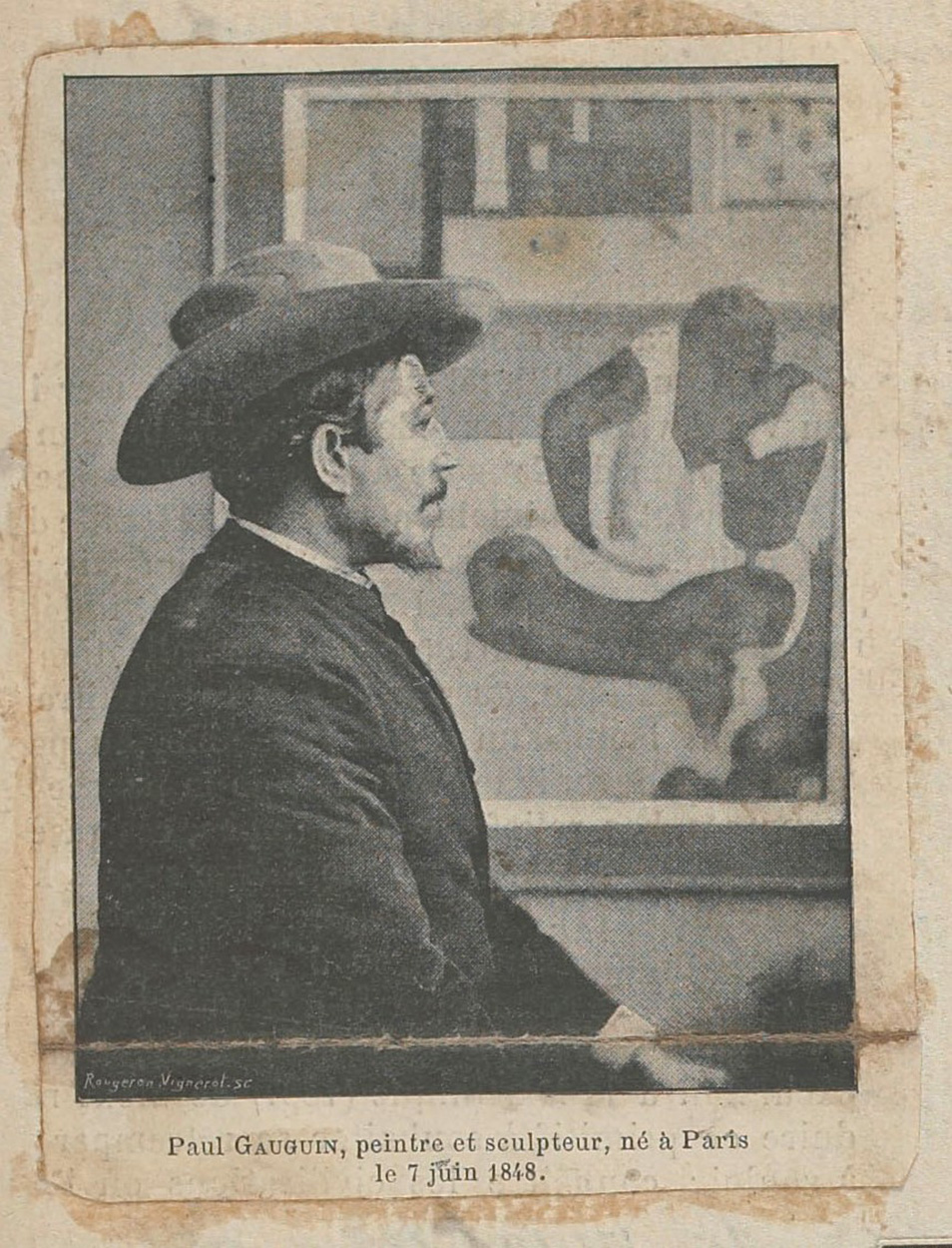
Two photographs show him in his studio with paintings on the wall behind him, all of them in flat mid-coloured frames with lighter inner and outer borders. These borders may have been gilded but, from the lack of light variation, are more probably white or yellow. From having been prosperous in his stockbroking days, Gauguin was, from around 1882, increasingly less well-off, and was unlikely to have been able to afford gold leaf. For the same reason, his frames are the flat, shallow, economical styles used by most of the Impressionists in their early years.
[1] See Nancy Mowll Mathews, ‘Gauguin, Buffalo Bill, and the cowboy hat’, Transatlantica, 2 ,2017
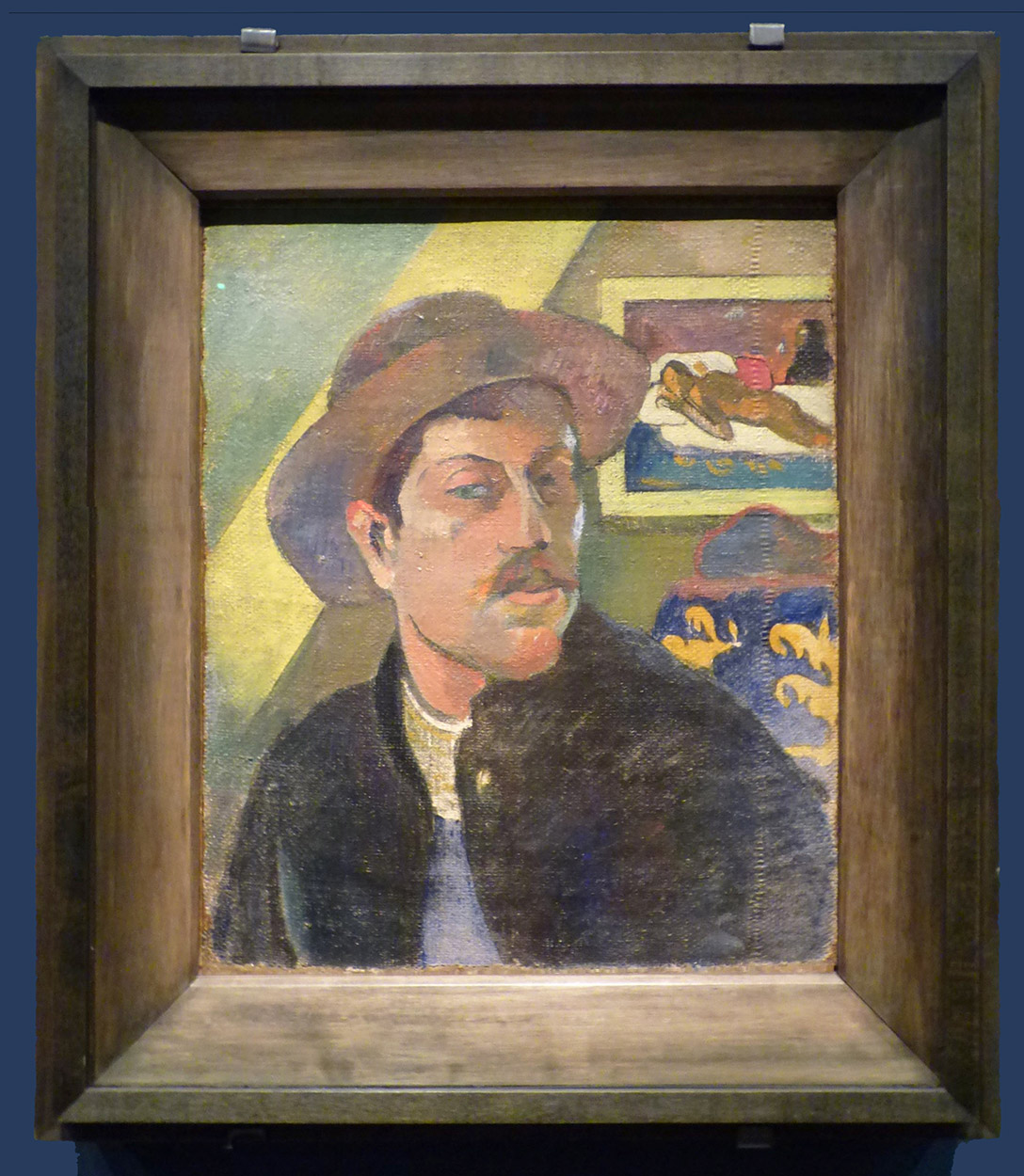
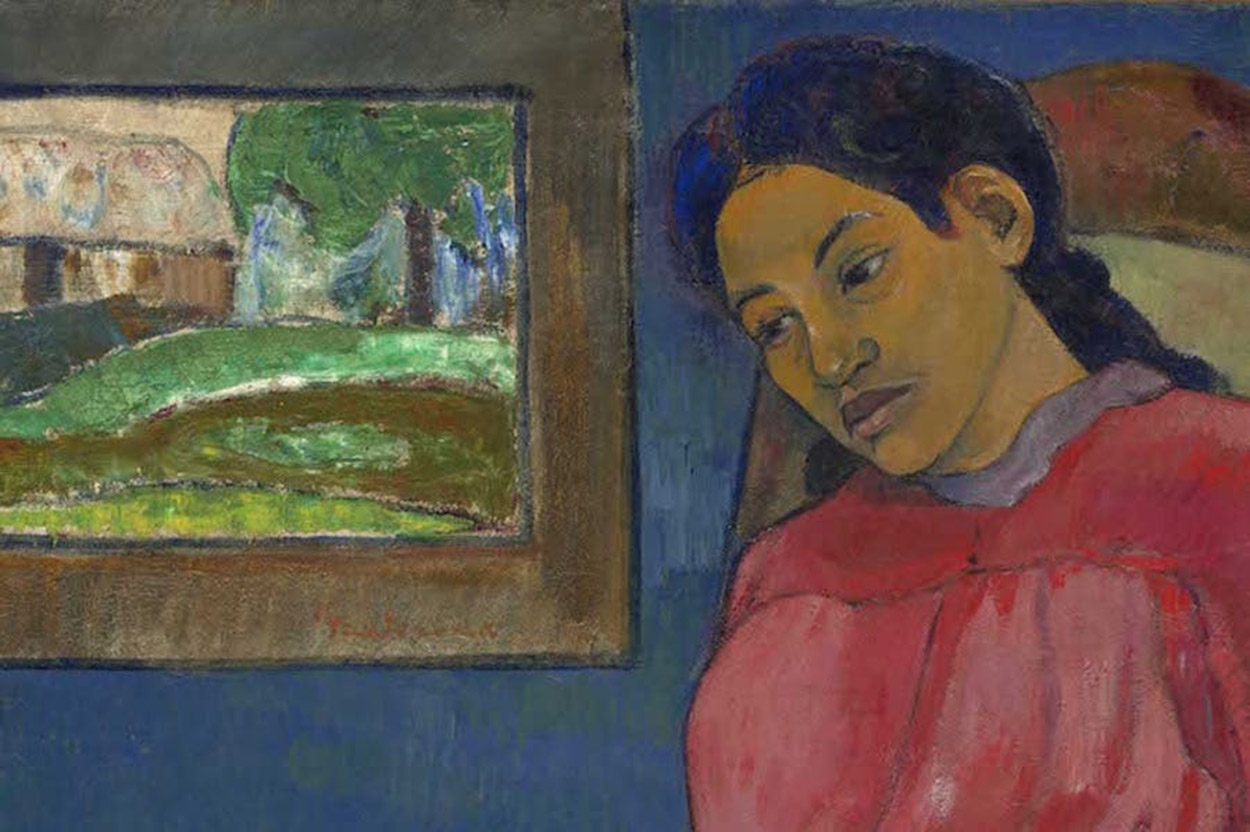
An even more cursory pattern can be seen in his Self-portrait in a hat, which shows Manao Tupapau hanging on the back wall in a completely flat yellow frame. This could be a reflection of his painting technique, of course, in which the elements of the composition are simplified into flat areas of colour, but the same type of frame holds an earlier, probably Breton, landscape in the background of Faaturuma. In this case it seems to be a simple stained wooden border, and both this and the yellow frame may be related to the painted strip frames being used by Van Gogh when Gauguin worked with him in Arles in 1888. A stained wooden frame seems entirely appropriate for the subject, time and Gauguin’s probable budget.
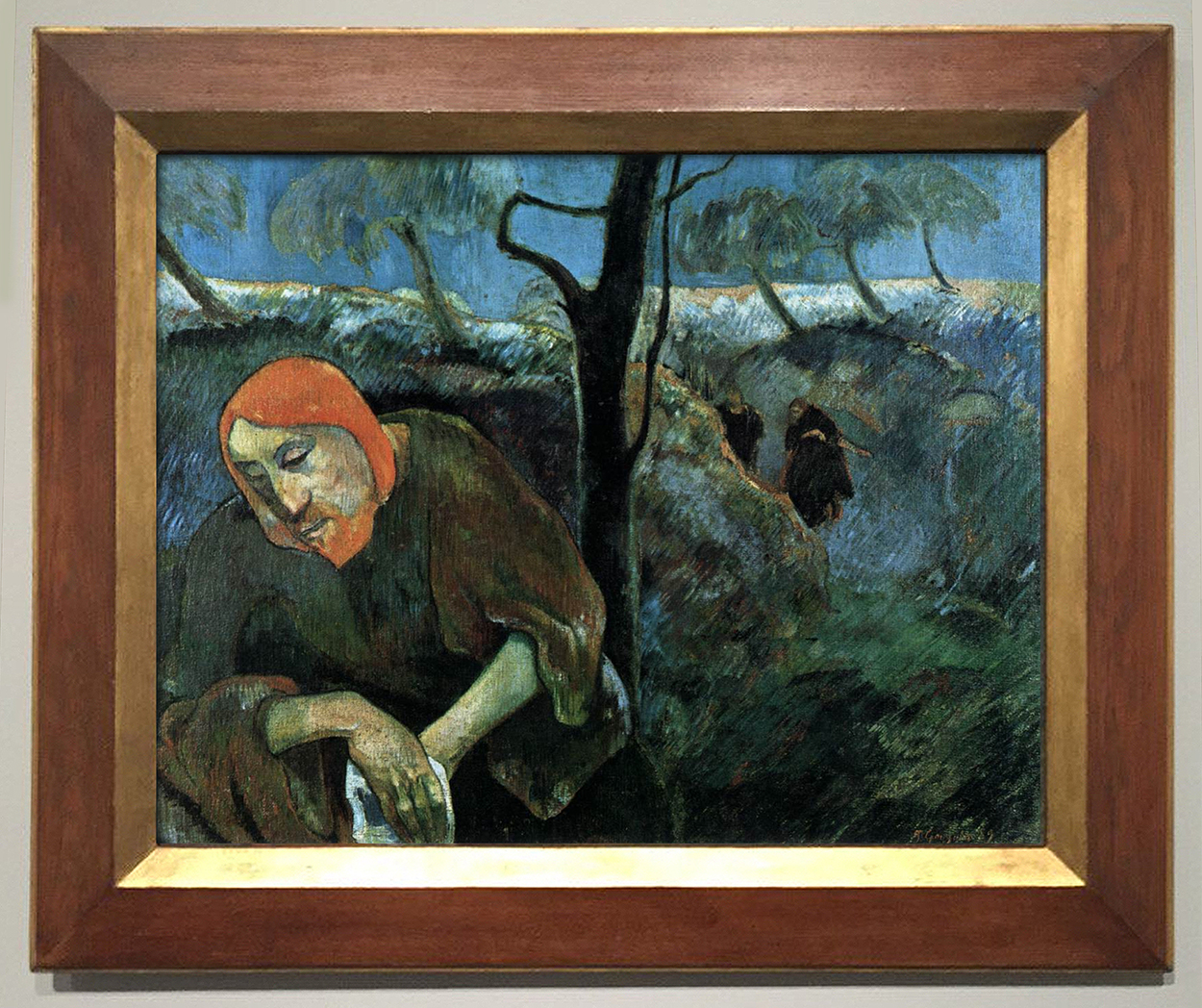
A close approximation of this style was used to frame the extraordinary red-haired self-identification with Christ in the Garden of Olives, painted by Gauguin in 1889. This frame from Paul Mitchell Ltd, with its wide, canted frieze of polished wood, gilt contour and gilded bevel at the sight edge, is an ‘artist’s frame’ of the very late 19th or early 20th century, and thus particularly appropriate – one of the geometric designs of the period which derived directly from the very plain settings used by early modern artists. Seen from the front, it is startlingly akin to the frame in the photo of Gauguin in his studio; however, the triangular profile has a weight and substance which acts like the plinth of a sculpture, anchoring the figure of Christ in its isolation and fear, and presenting it to the viewer almost in terms of a war memorial. The warm colouring of the wood creates a darker harmony with the red hair and with the chestnut browns woven through the painting; it also provides a foil to the Madonna-blue of the sky, similar to the painted brown frame in Faaturuma.
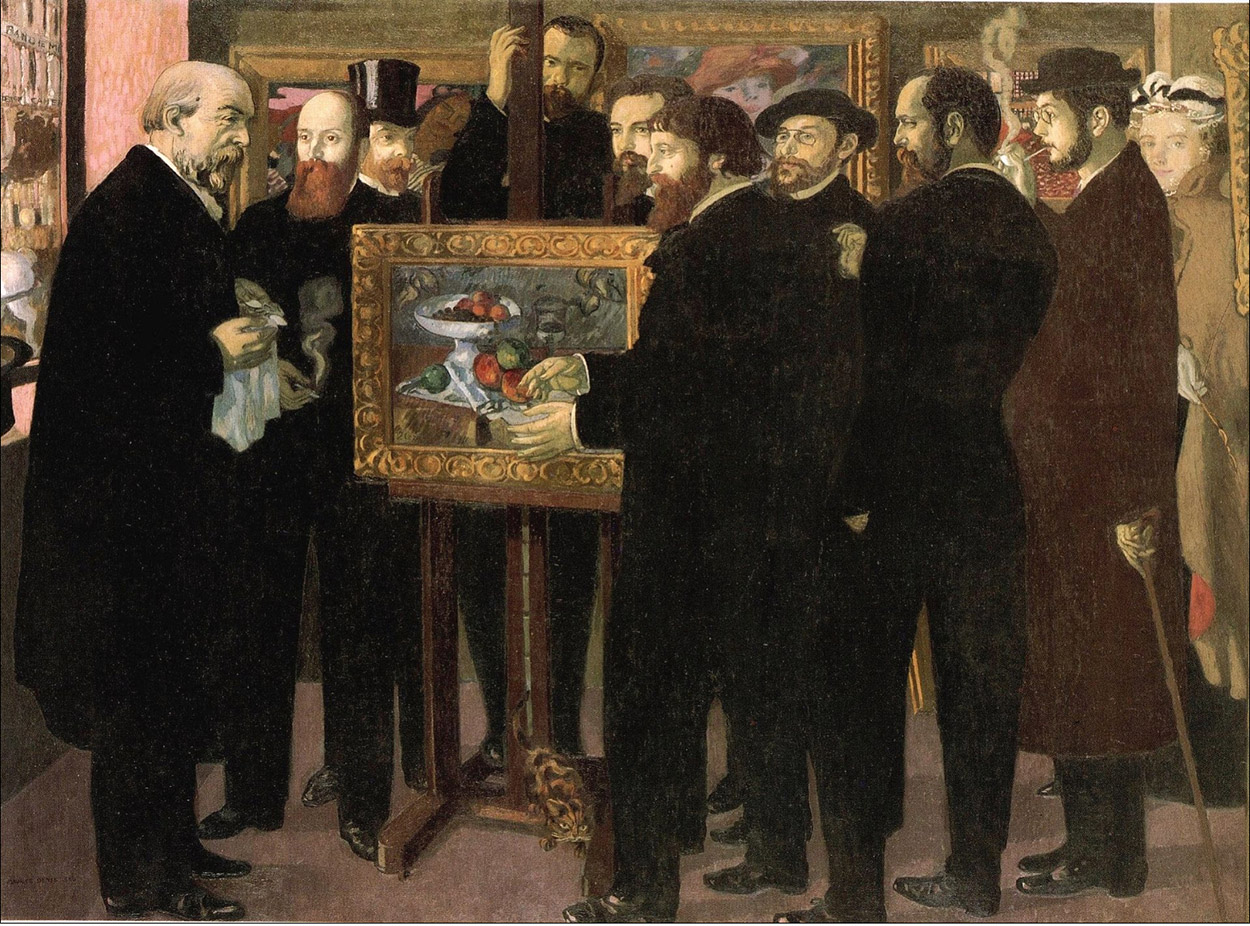
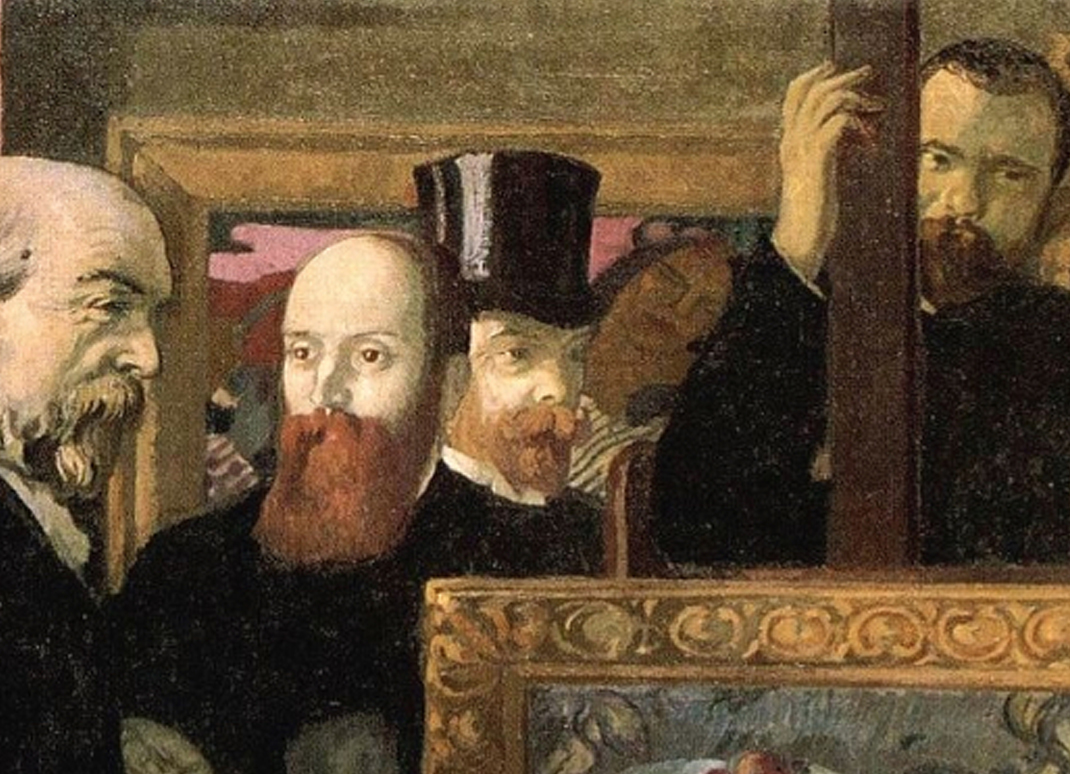
An outsider’s view of a similar framing style can be found in Maurice Denis’s large Homage to Cézanne of 1900. Denis and his generation of artists were greatly influenced by Gauguin’s work; its religious, mystical content fed into their inclination towards the Symbolist movement (later the Nabis), just as much as its use of areas of flat colour. In his later paintings, subject and volume began to reassert themselves, as in this particular hommage. The Cézanne on the easel coincidentally belonged at one time to Gauguin, and one of Gauguin’s Tahitian paintings also hangs on the wall behind the assembled Nabis. The group is posed in the gallery belonging to the dealer Ambroise Vollard, who is clinging to the easel in the centre, immediately behind Cézanne’s painting. Vollard had put on solo exhibitions of Cézanne’s, Van Gogh’s and Gauguin’s work, and was in close touch with both the older and younger artists; it is probable that he would take note of their concerns as to framing (the frame of the Cézanne in the foreground is symbolic of its importance rather than necessarily authentic), and that the architrave frame of the Gauguin with its simple moulding would have been approved by the artist.
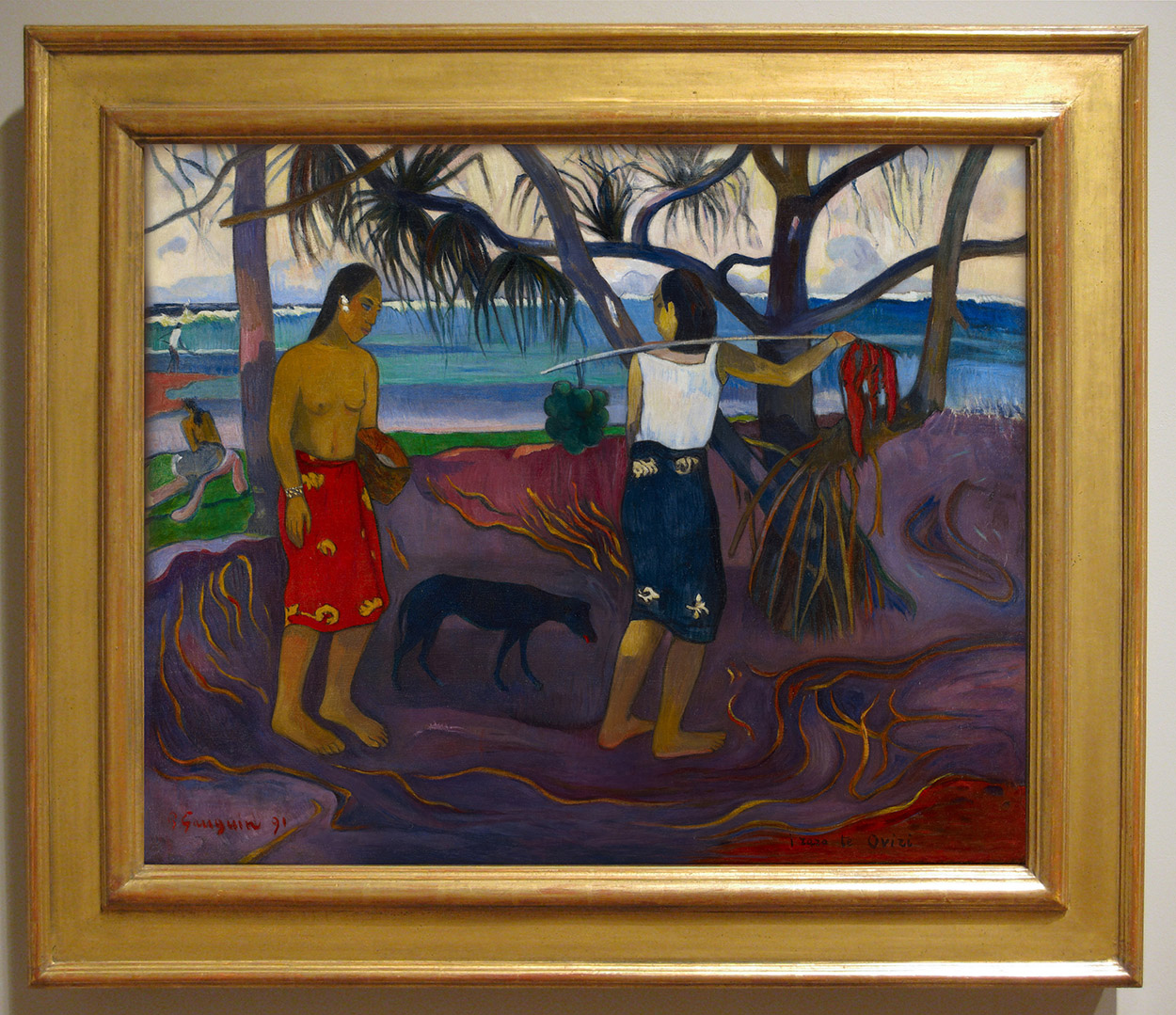
This was evidently the solution chosen, very successfully, for this painting in the collection of the Minneapolis Institute of Art; it is extremely close to Vollard’s frame for Gauguin’s work as shown by Denis.
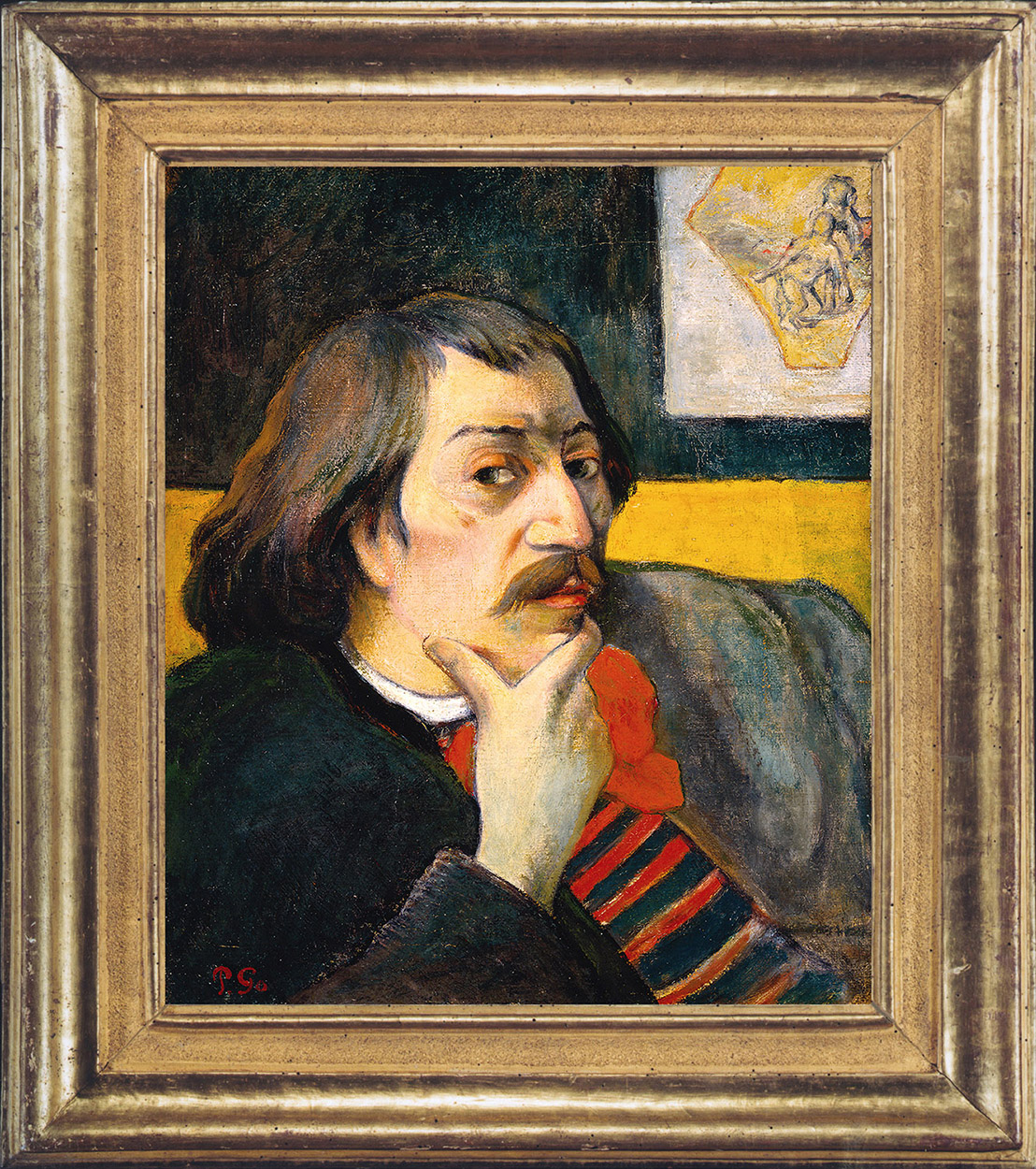
The information which can be discovered from such paintings and photos gives the kind of evidence to support, for example, a similar reframing in a relatively plain and linear style by Paul Mitchell Ltd of a self-portrait painted by Gauguin in c.1893. It is a major work in the collection of a major museum, and needed a style of presentation which both acknowledged its importance, and gave its small dimensions added authority. The solution in this case was to use an antique 18th century Louis XV frame, in which the apparent simplicity of the moulding was undercut by its complex of repeated parallel lines and subtle variations of profile, and by the difference in texture provided in the burnished gilding and the sanded hollowed frieze. This frame takes up the features of Gauguin’s own, rudimentary borders, and remakes them as a timeless, classical margin which respects and amplifies the presence of this ruminative image.
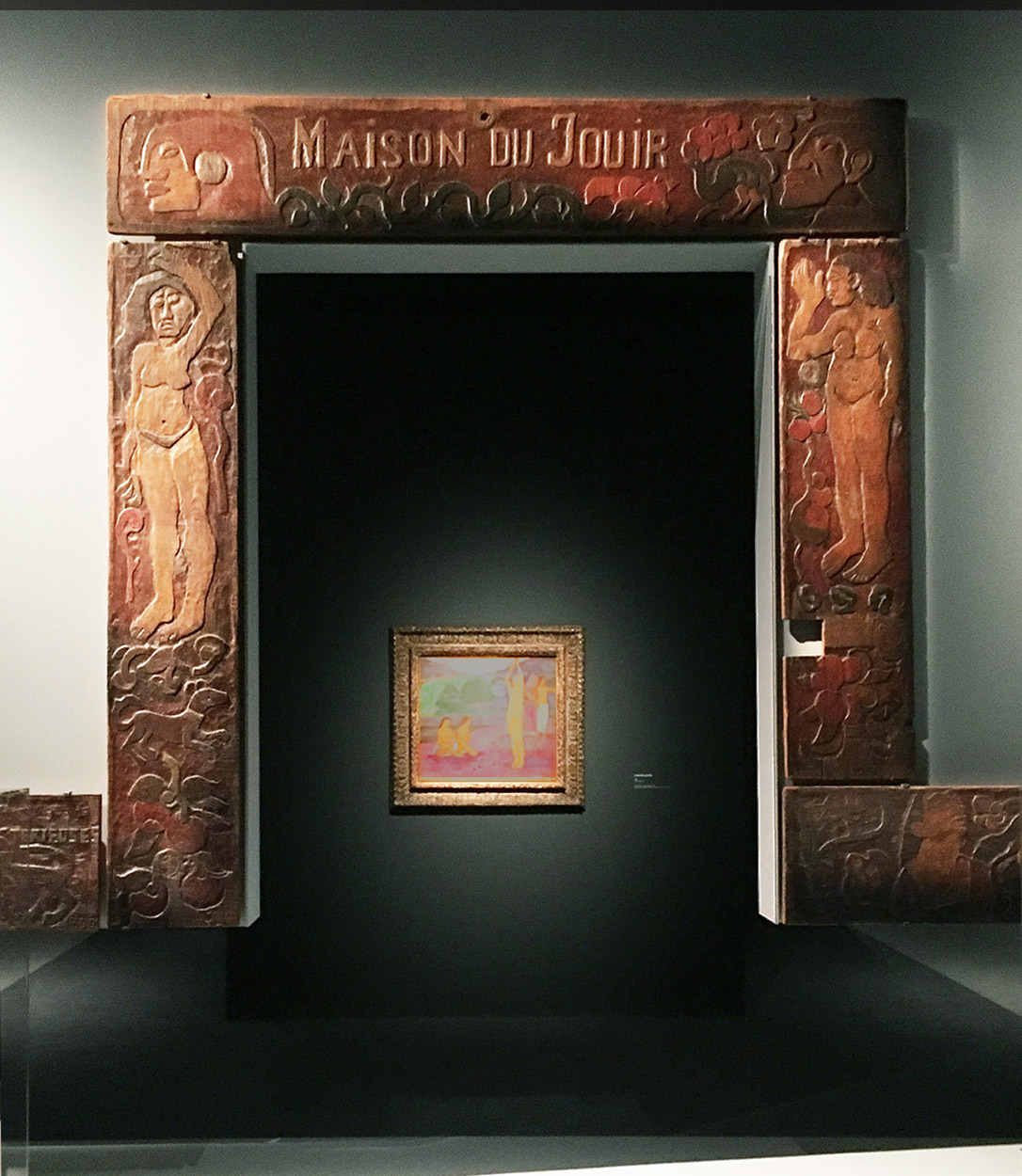
Other ideas on reframing have taken into consideration Gauguin’s own carvings. These include the door lintel and jambs of his house on Atuona, the ‘Maison du jouir’ or House of Pleasure, now in the Musée d’Orsay. Together these pieces created a frame leading into the artist’s home and personal Eden, and the carving aspires to an expressive primitivism – monumental, curvaceous and stylized.
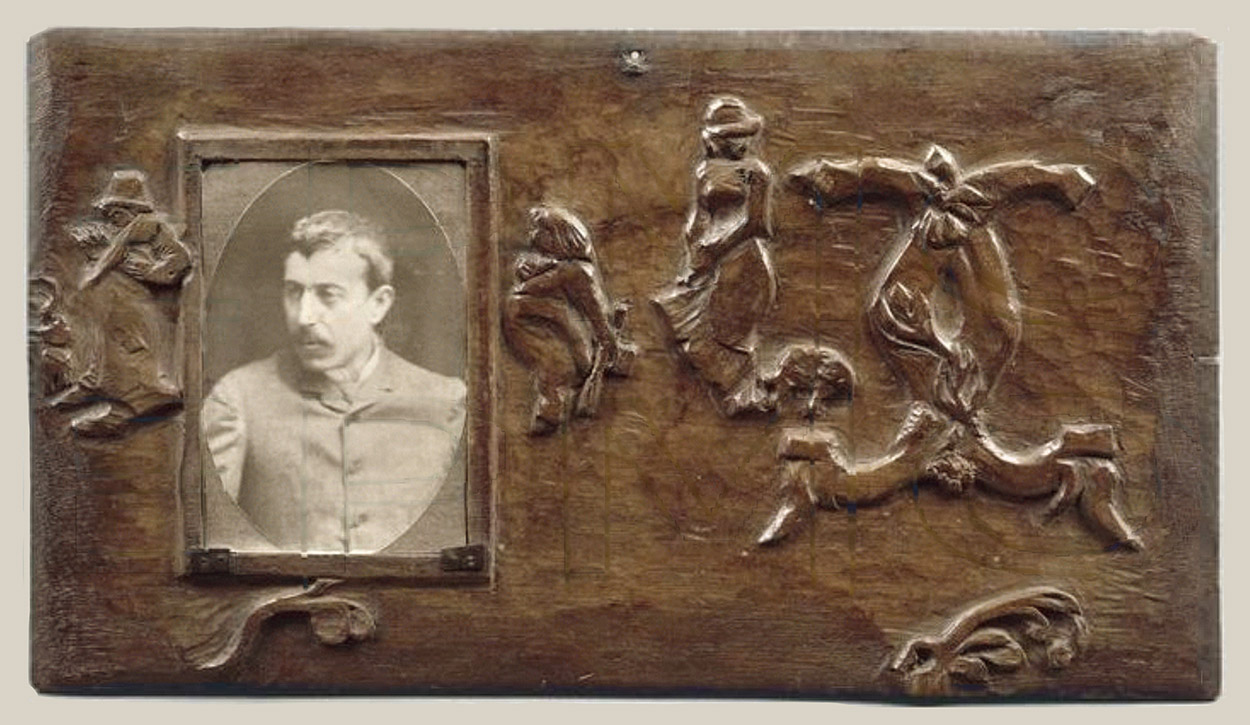
This is also true of a surviving frame carved in walnut by Gauguin, and containing his photo. It shares the same low- to mid- relief, chunky, rounded technique, which has become the model for a large number of museum reframings of important works by the artist. These tend to look again towards antique frames, which enhance the presence of the paintings, and – in the case of Gauguin’s Tahitian subjects – underline their mysterious sense of being outside time and far removed from 19thcentury France. The styles which most embody the features of Gauguin’s own carvings are found in 17th century Baroque frames, either Italian or Spanish, often with a reverse or bolection profile which pushes the picture surface forward to the viewer.
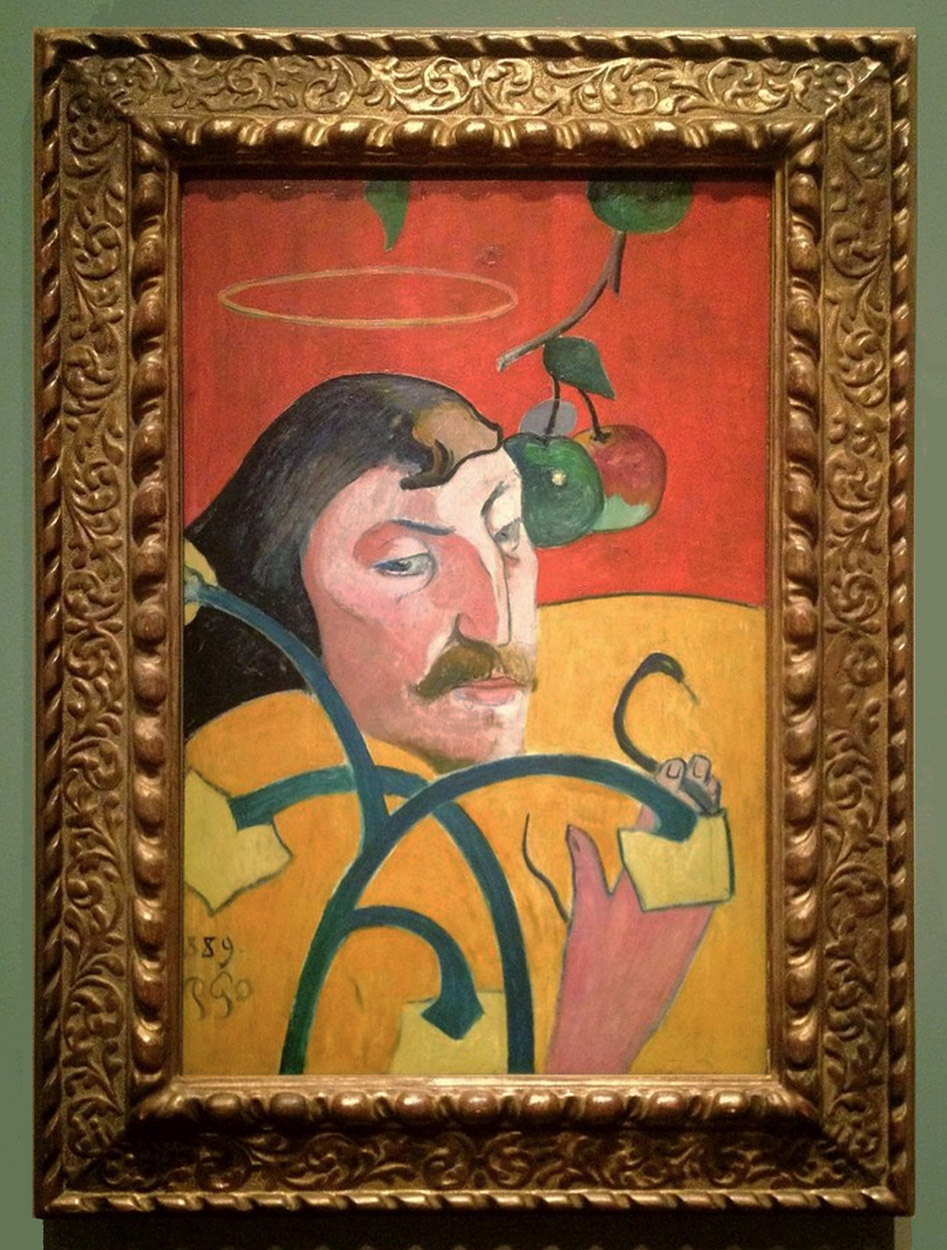
The Washington self-portrait epitomizes this method of presentation, with its Italian Baroque gadrooned frame – the gadroons at the sight edge echoing the rounded forms of the apples, leaves, curving stems, and elements of Gauguin’s face, and the detail of the scrolling pastiglia ornament on the frieze acting as a foil to the large areas of flat colour in the painting.
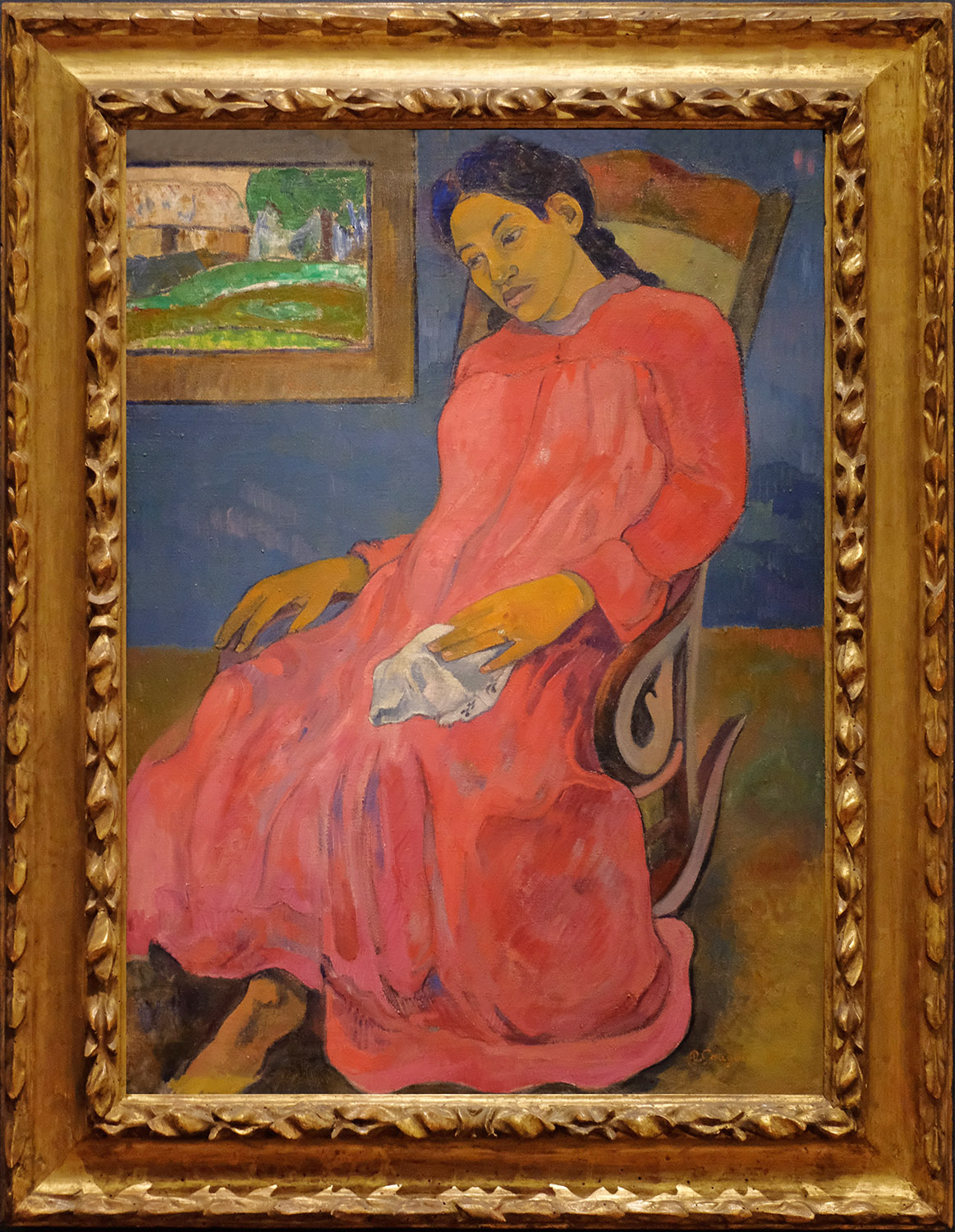
Faaturuma, previously introduced for its evidence of a framed Breton landscape by Gauguin, has similarly been given a 17th century Italian Baroque frame by Paul Mitchell Ltd, of a pattern which creates its own dialogue with the painting. The garland of bunched leaves at the sight edge provides a gentle shimmer of movement in contrast to the static pose of the model, and emphasizes the pensive mood of the composition; the shades of the softly-patinated original gilding harmonize with the autumnal colours scattered across the canvas, and appear to continue the painted frame in the corner. But the gilding is also complementary to the rich blue background, just as the great cascade of the rich pink dress complements the clear greens of the painted landscape. The ebb and flow of these four colours results in a piercing vibrancy, in tension with the melancholy which is the subject, projecting the painting from the gallery wall: an illusion underlined by the bolection profile of the frame. This design, its ornament and finish, allied to the pinks and blues of the painting, bring artists such as Pontormo irresistibly to mind, and connect Gaugin’s model in her sweeping pink costume to portraits of 17th century Italian noblewomen.
Plainer versions of these bolection profiles – that is, without carved 3-dimensional ornament – have been used to frame two more half-length portraits.
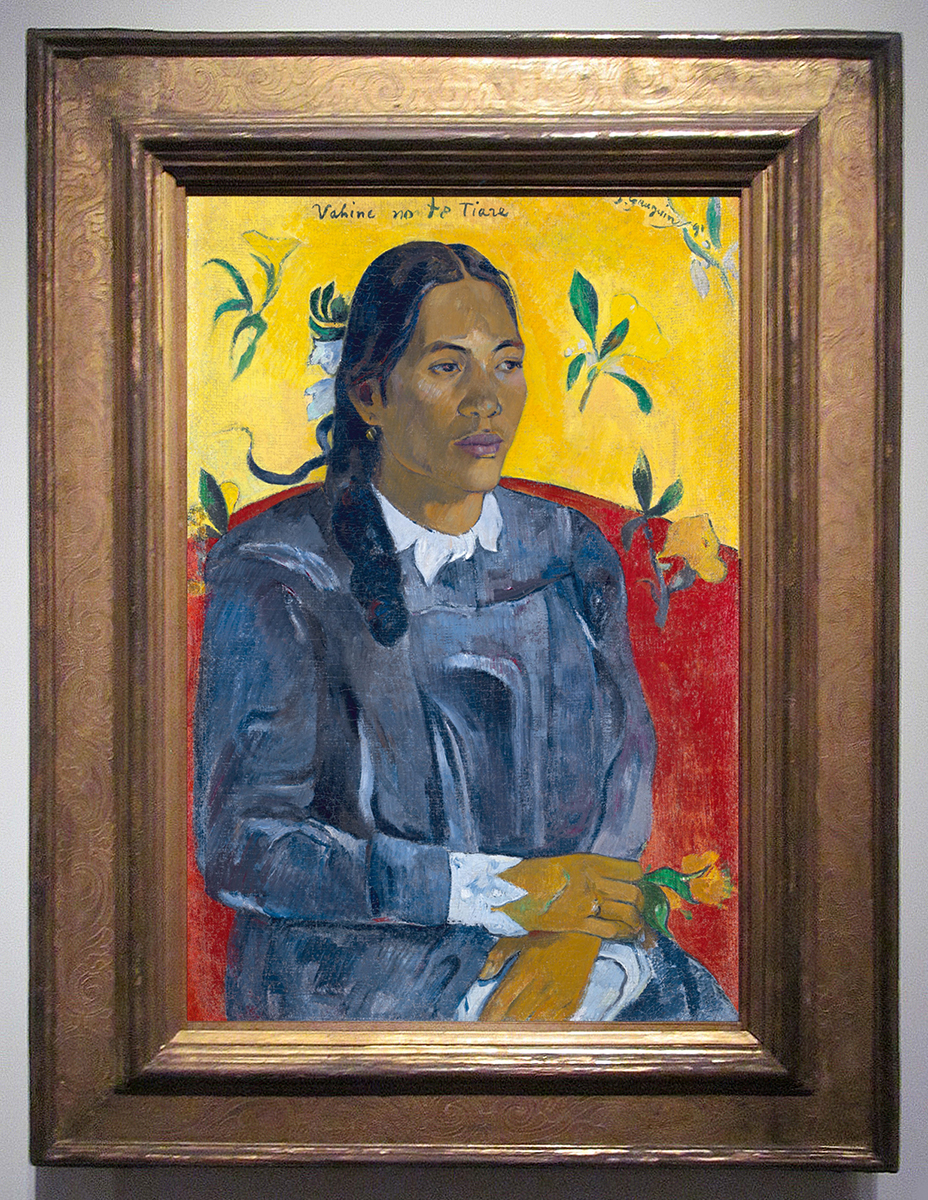
The less ornamented version of this sculptural, architectural form - another antique Italian Baroque frame - has been applied to the portrait of a Tahitian woman in the Copenhagen museum (a collection very rich in the artist’s work, since his wife and family lived there). The frieze is punched with a design of scrolling flowers and foliage, clasped at intervals over buds; it catches the light and shimmers, like a rich brocade, but is subservient to the bold linear mouldings in a way that carved ornament cannot achieve. This suits the still, hieratic pose of the sitter and the pure uncluttered lines of Gauguin’s art, whilst saluting the feeling of antiquity generated by her pose.
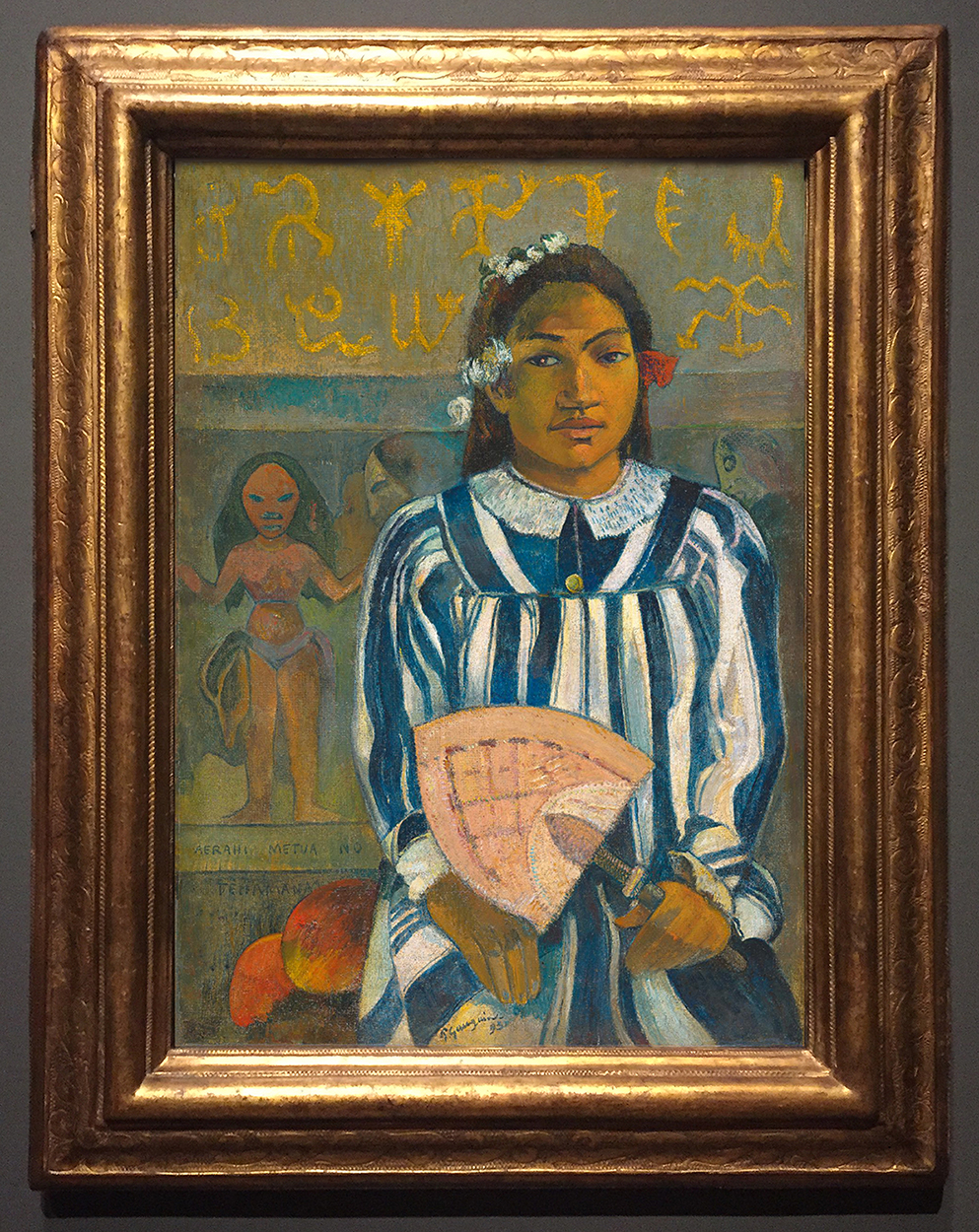
A similar solution was found for Merahi metua no Tehamana, the portrait of Gauguin’s lover, by Paul Mitchell Ltd. Here, the profile of the frame is even more solid and sculptural, its voluptuously curving ogee and exaggerated torus at the top edge echoing the monumentality of the seated woman, and emphasizing her link to the figure of the goddess behind her. It acts as a great door frame, opening onto a temple-like scene where the weight of the past and the transience of the presence hang in balance. The spectator is reminded of the equally monumental door frame which Gauguin carved for his own house on Atuona. Like the previous frame, this one is inscribed with surface decoration – a pattern of undulating leaves on a hazzled (zig-zag textured) ground, with further narrow bands of hazzling. These spark a rapid movement of light on the frame, without softening its essential form.
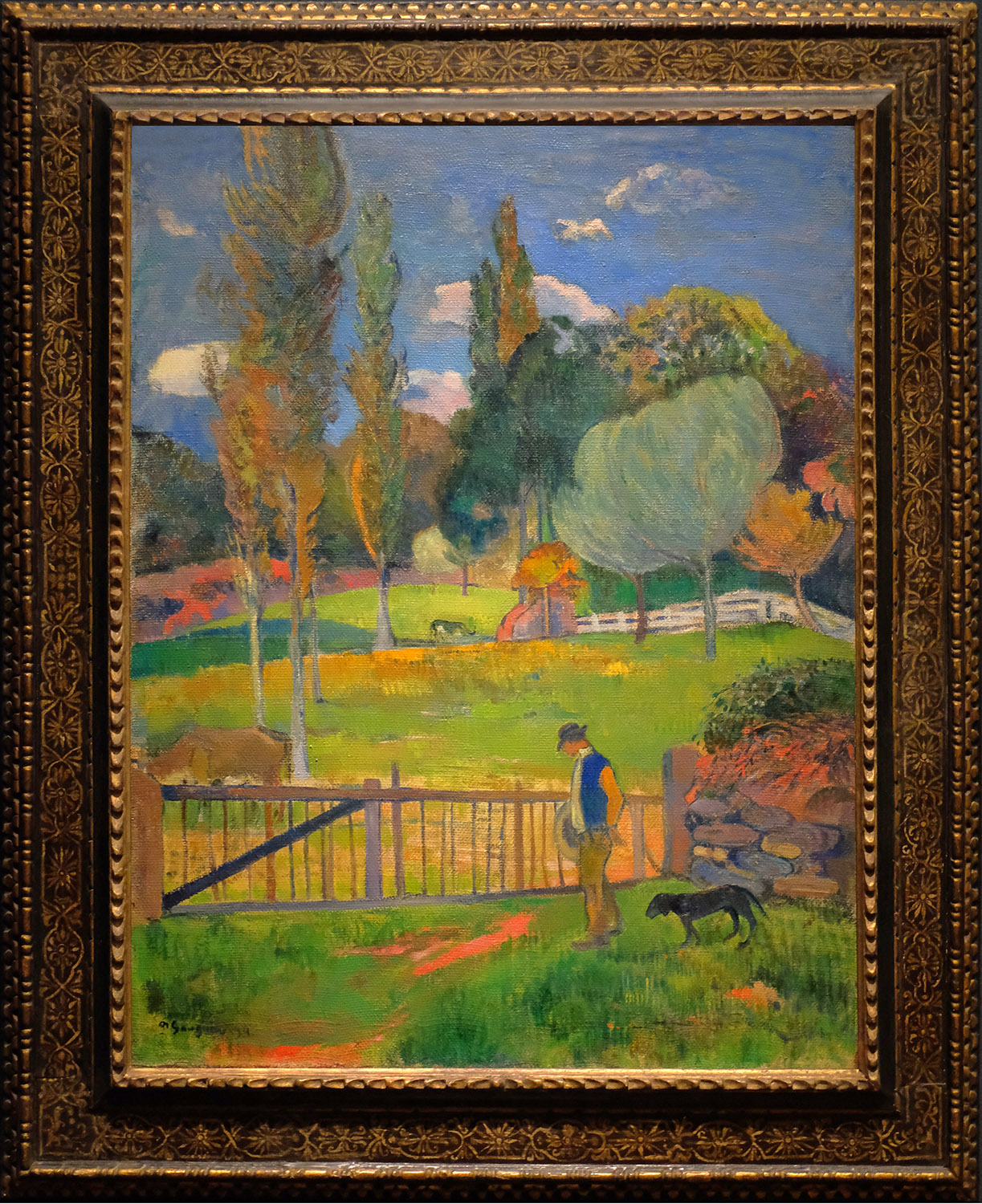
The Nelson-Atkins Museum owns one of Gauguin’s Breton landscapes, its colours even more vibrant than those in the Faaturuma painting. It has been framed by Paul Mitchell Ltd in another 17th century Italian frame: this time a reverse cassetta with a flat frieze, very different in effect from the solidly-curving profiles of the previous designs. This cassetta is more classically severe and linear, bordered with small mouldings and finished in black and gold; its frieze has an exceptionally beautiful design of a shaped chain painted in mordant gold, each link of which is filled with alternate leaf buds and sunbursts. This finish provides a foil to the saturated colours of the landscape, but also echoes the motifs of nature, foliage and sunshine – and, in a visual twist, the graphic brushwork which Gauguin had learnt from Cézanne.
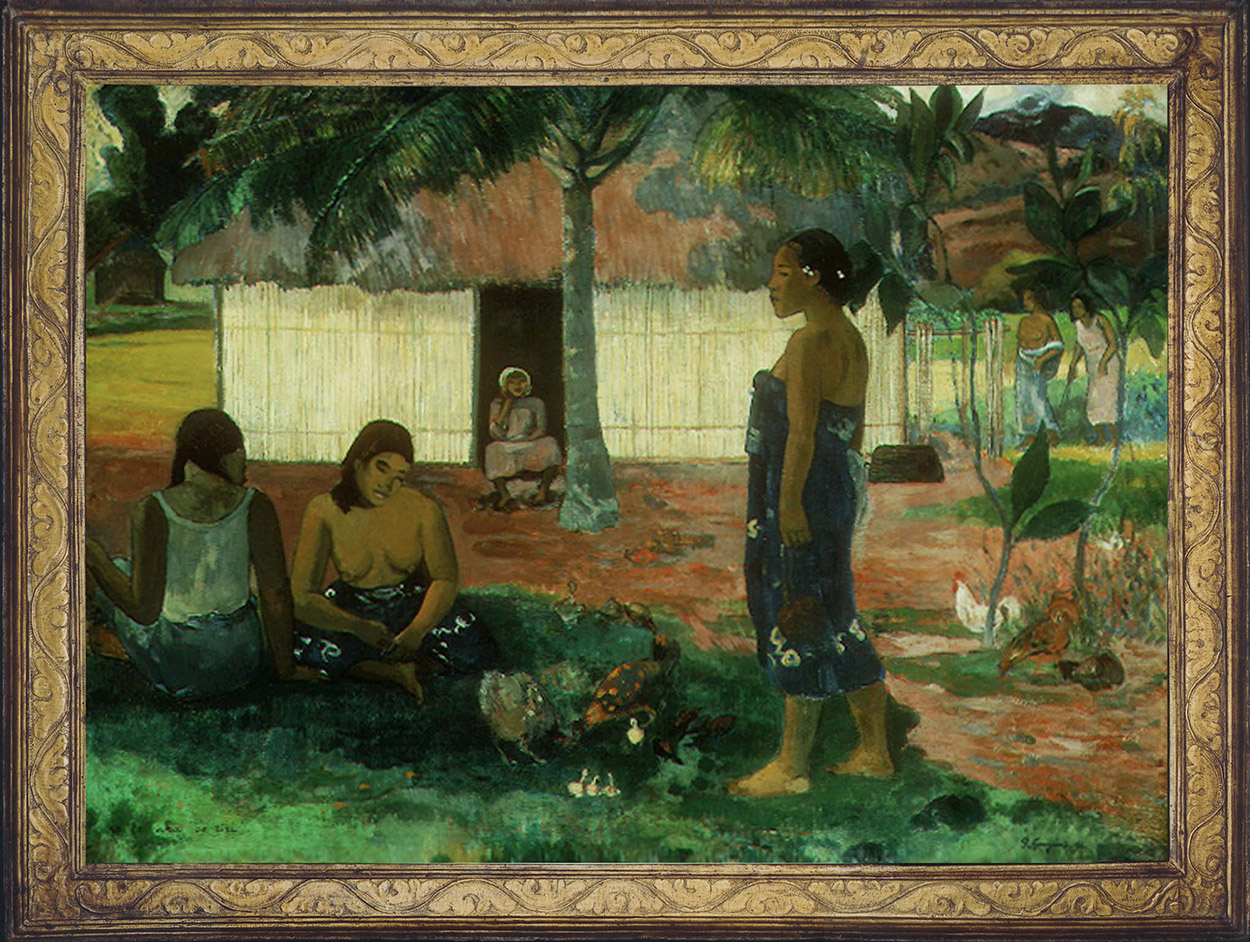
Finally, in a restatement of the plain geometric and architrave profiles with which this essay began, here is an example of the simplest of all cassetta frames – a wide frieze between minimal mouldings, just as Gauguin chose to paint the frames in the backgrounds of his own work. This one, however, is a beautiful and rare 16th century Venetian cassetta, from the collection of Paul Mitchell Ltd, still retaining its original gilding. It has also been decorated on the frieze in very gently-raised pastiglia with a design of flowing lobed leaves, alternately reversed, along a wave-like stem, set against a punchwork ground. The leaves find an echo in the waving palm leaves of the painting, and the lines of the whole frame are reflected in the ebb and flow of rounded forms against the criss-cross pattern of horizontal and upright forms. This is a marrying of antique frame and late 19th century painting in which the aesthetics of each object coincide so fortuitously and so satisfyingly as to give the impression that Gauguin himself might have chosen this frame.
These various methods of framing the work of a major artist – either by using information on his original frames, garnered from contemporary photos, his own paintings and those of his friends; or by matching the technique and visual elements of his work with those of antique frames – illustrate the importance of both historical context and aesthetic imagination in the presentation of modern masters. A frame can make such a difference...
